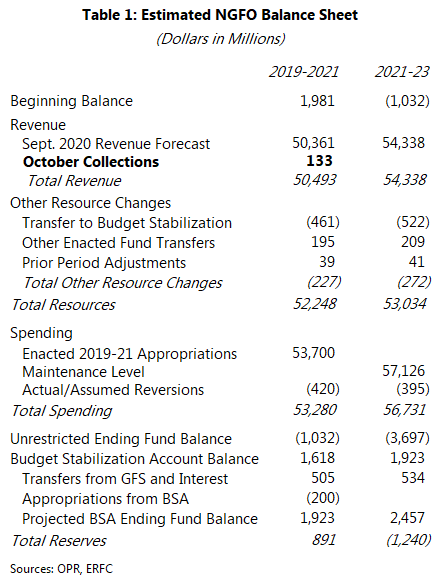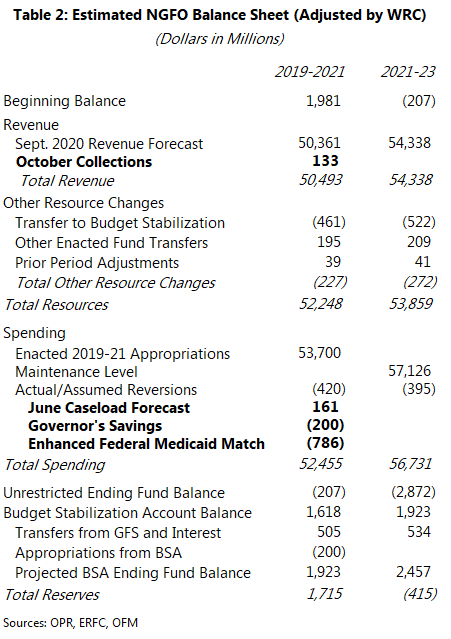10:43 am
October 19, 2020
Since the ugly June revenue forecast, revenue collections have been coming in higher than expected. With the October collections report, this trend has continued even after the revenue forecast was adjusted up in September.
The state hasn’t produced a public budget outlook based on the September forecast. In Table 1, I’ve used the unofficial June outlook from the Office of Program Research, adjusted it to account for the September revenue forecast, and added in the higher October collections. In this balance sheet, the spending figures are those enacted in the Spring (including the governor’s vetoes). The estimated unrestricted ending fund balance is negative $1.032 billion in 2019–21 and negative $3.697 billion in 2021–23. If the budget stabilization account (BSA, or the rainy day fund) is used, total reserves over four years are negative $1.240 billion.

This probably overstates the budget problem. As David Schumacher of the Office of Financial Management (OFM) has said, the state has taken a number of actions since the current budget was enacted that will result in lower spending. The state has also received federal funding that can (in some cases) be used in place of state spending. On the other hand, the June caseload forecast increased estimated spending needs.
In Table 2, I’ve added the estimated spending associated with the June caseload forecast, estimated savings undertaken by the governor, and estimated savings to the state from the enhanced federal Medicaid match (assuming it remains in place through FY 2021). With these estimated changes to spending, the unrestricted ending fund balance is negative $207 million in 2019–21 and negative $2.872 billion in 2021–23. If the BSA is used, total reserves over four years are negative $415 million.

These are just very unofficial estimates at this point, but they help to provide an idea of where the outlook may stand. A big unknown is whether the federal government will provide more funding to state and local governments. Last week, the Hill reported,
Categories: Budget.Yet there’s been no indication that the sides have come closer on what is perhaps the greatest barrier to a deal: funding for state and local governments. Mnuchin has offered $300 billion in that area — an “extraordinary compromise”, he said Wednesday — but the figure falls well short of the $436 billion Pelosi has proposed.
